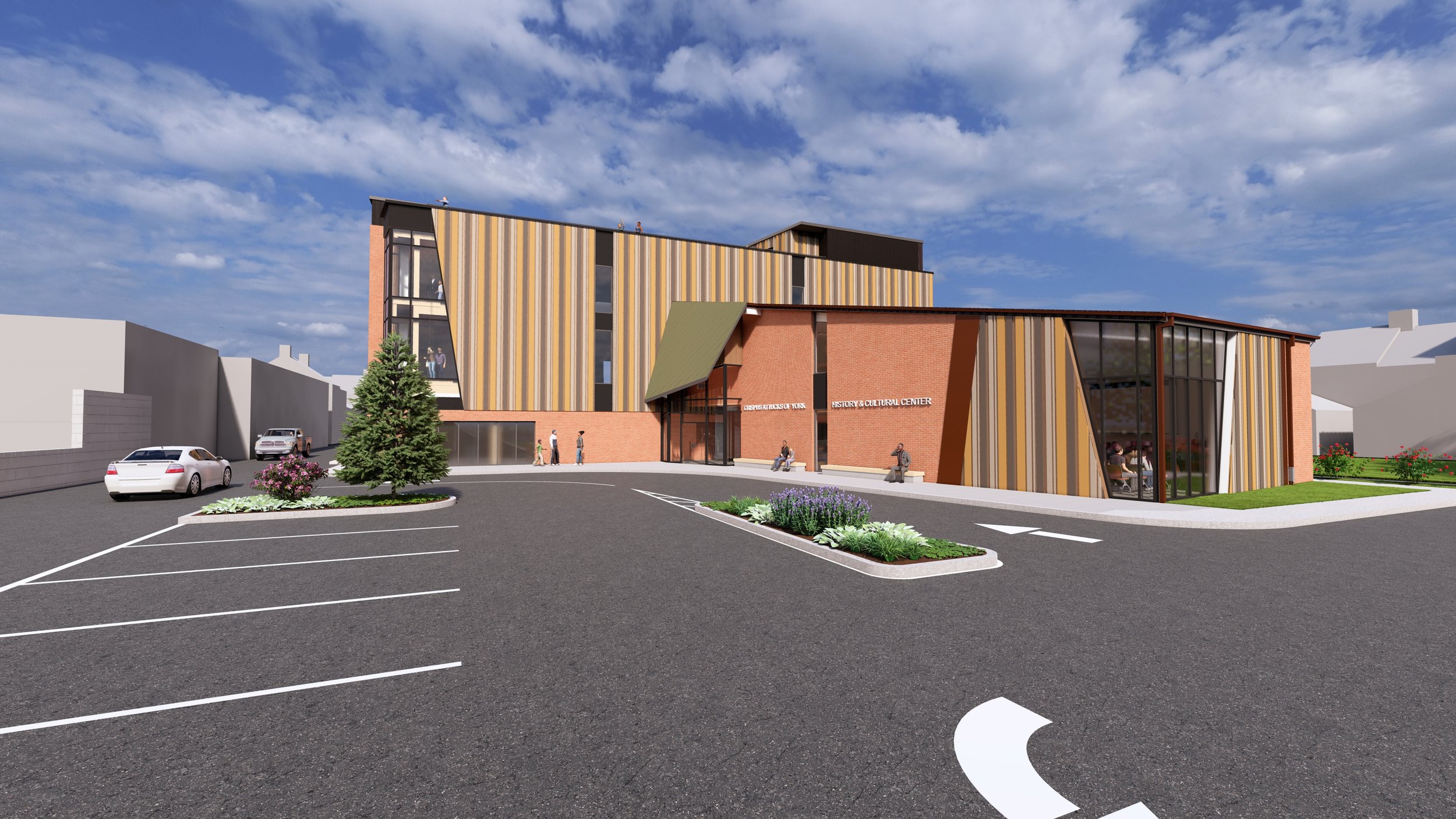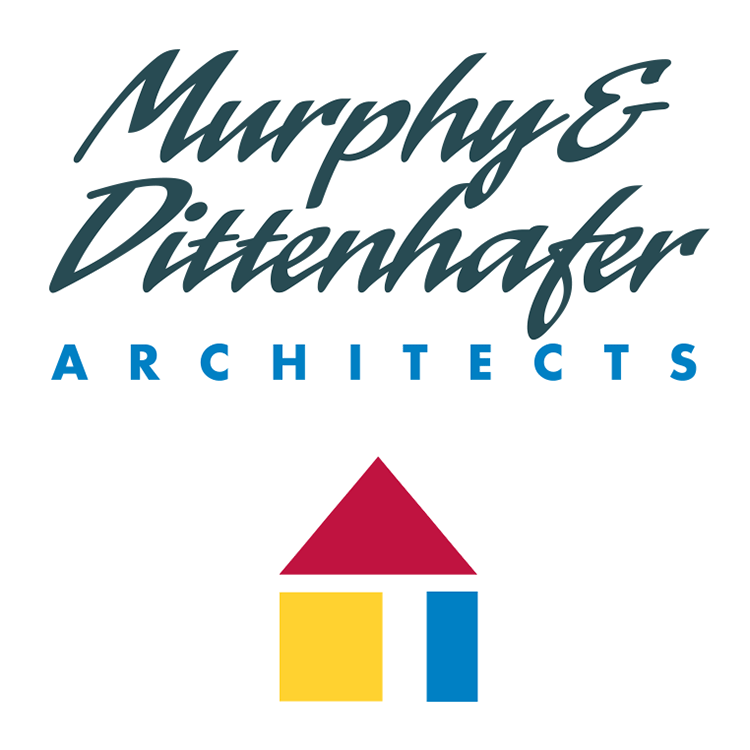Digital animations help Murphy & Dittenhafer Architects and clients see designs in a new light.


There’s nothing quite like walking through a brand-new or freshly restored building for the first time and experiencing the thoughtful Architectur4 and design details in person. But what if you could get close to that feeling before construction is complete?
Thanks to technological advancements, 3D digital animations enable a clearer picture of Architectural concepts. Designers at Murphy & Dittenhafer Architects use this tool as a way to excite owners and community members about projects, but also to clarify their own design visions and better serve their clients.
Digital animation by Murphy & Dittenhafer Architects for Crispus Attucks History and Culture Center in York, Pennsylvania
Rendering more than just a digital animation
Taken literally, digital animations in Architecture are 3D moving designs that allow people to “walk” through a space and interact with it from different angles. In Murphy & Dittenhafer’s case, software like Lumion and Revit enable this process alongside the expertise of Architectural Designers.
But beyond the logistics of the process, these animations serve owners and community members in ways that 2D designs often cannot.
Patrick Ness, Architectural Designer at M&D, says aerial animations often help people better grasp the scale of projects in comparison to surrounding buildings, and moving walkthroughs can better show how natural factors impact the design. For example, Ness says, “You really start to get the feel of the light bouncing off the different materials.”
Naturally, this excites people who are looking forward to seeing finished constructed designs in real life. Architectural Designers at M&D may complete digital animations at different stages of the design process. In the case of the Crispus Attucks project in York, Pennsylvania, M&D created the animation after the groundbreaking as a way to generate excitement in the community and assist in the final design of exhibits and storytelling components.
“When you show clients, they are pretty wowed by the whole thing,” says Ness. The new Crispus Attucks History and Culture Center building features exhibit spaces over multiple floors. Only animation can capture its true depth.
For projects with moving pieces, moving images make sense
Digital animations help Architects working on projects as much as community members and owners benefiting from them. Reece Gonsar, Architectural Designer at M&D, says, “You can visualize a lot more of what it would actually be like to be in that space.”
That’s helpful for professionals like Gonsar, who can tweak designs throughout the process as they see proposed building elements from new angles.
Forefront of innovation in design
Digital animations are a staple at many Architectural firms. Murphy & Dittenhafer has made sure to take advantage of these technological advancements over the last decade, during which the animation process has increased in quality and speed.
High-powered computers, the latest software and plugins, and—of course—talented professionals enable outstanding outputs that benefit clients, community members, and Architects alike. Ultimately, digital animations serve the purpose of helping everyone visualize the future.
Like us on Facebook!
“Interior designs being integral from the beginning of a project capitalize on things that make it special in the long run.”
Digital animations help Murphy & Dittenhafer Architects and clients see designs in a new light.
Frank Dittenhafer and his firm work alongside the nonprofit to fulfill the local landscape from various perspectives.
From Farquhar Park to south of the Codorus Creek, Murphy & Dittenhafer Architects help revamp York’s Penn Street.
Designs for LaVale Library, Intergenerational Center, and Beth Tfiloh Sanctuary show the value of third places.
The Annapolis Department of Legislative Services Building is under construction, reflecting the state capital’s Georgian aesthetic with modern amenities.
For the past two years, the co-founder and president of Murphy & Dittenhafer Architects has led the university’s College of Arts and Architecture Alumni Society.
The firm recently worked with St. Vincent de Paul of Baltimore to renovate an old elementary school for a Head Start pre-k program.
The market house, an 1888 Romanesque Revival brick structure designed by local Architect John A. Dempwolf, long has stood out as one of York’s premier examples of Architecture. Architect Frank Dittenhafer is passing the legacy of serving on its board to Architectural Designer Harper Brockway.
At Murphy & Dittenhafer Architects, there is a deep-rooted belief in the power of combining history and adaptive reuse with creativity.
University of Maryland Global Campus explores modernizing its administration building, which serves staffers and students enrolled in virtual classes.
The Wilkens and Essex precincts of Baltimore County are receiving solutions-based ideas for renovating or reconstructing their police stations.
The firm has earned the designation annually since 2016 in recognition of its commitment to supporting newer professionals in the field.
Murphy & Dittenhafer Architects recently completed the Design Development phase for a 20,000-square-foot building for Crispus Attucks York. Construction should begin in August.
The facility in Anne Arundel County, Maryland, is re-envisioning its focus with the help of Murphy & Dittenhafer Architects.
Murphy & Dittenhafer Architects received numerous awards from AIA Pennsylvania, AIA Central Pennsylvania, AIA Baltimore, and ABC Keystone.
Since 2019, the firm has designed a number of protected entryways for Anne Arundel County Public Schools.
A business lunch at an iconic building sparked an awakening whose effects continue to ripple down the city thoroughfare.
Since its founding in 1985, Murphy & Dittenhafer Architects often has sought out community-oriented projects that have a lasting impact.
The university’s Arts and Architecture Alumni Society Board President — and a past award recipient himself — handed out this year’s awards to seven recipients.
After an extensive evaluation of a Maryland state building in Annapolis, the architectural firm recommended demolishing it and erecting a new structure.
Six members of M&D’s team of creative professionals are advancing their careers within the firm.
Murphy & Dittenhafer Architects is part of a team tasked with designing and renovating the burned-out Horn Farm Center farmhouse to be a sustainable building at the regenerative farm.
The firm was selected from among some of the top Architects in the area to bring a new look and improved function to the sanctuary at the Beth Tfiloh Congregation in Maryland.
Licensed Architect Stefanie Tincher has been managing an evaluation of the William Donald Schaefer Building, which houses an array of Maryland state agencies.
The York thoroughfare connects neighborhoods, businesses, and organizations on the western side of the city. Murphy & Dittenhafer Architects has teamed up with the YMCA of the Roses and community member Montez Parker II to create a Vision Plan for the area.
The historic landmark building in Harrisburg’s Capitol Complex is expected to reopen in spring 2023, but in November the Harrisburg Symphony Orchestra will return to the structure’s ornate auditorium for its 2022-23 season.





























Seitzland Village represents historic pride and a dedication to community.